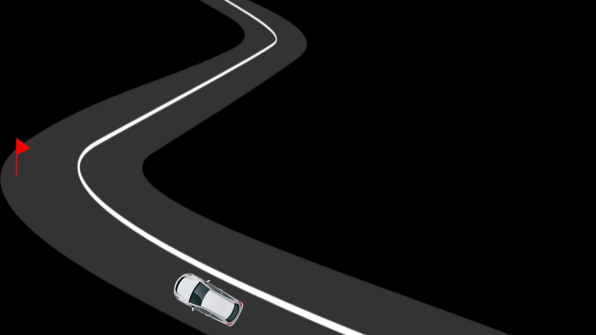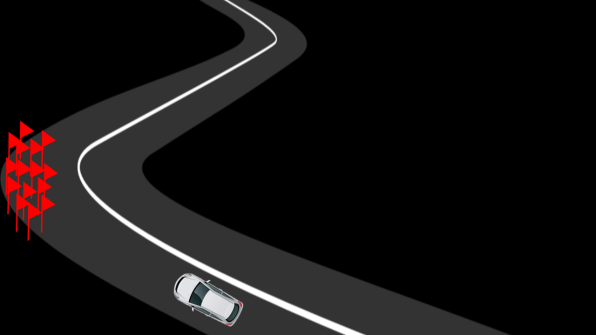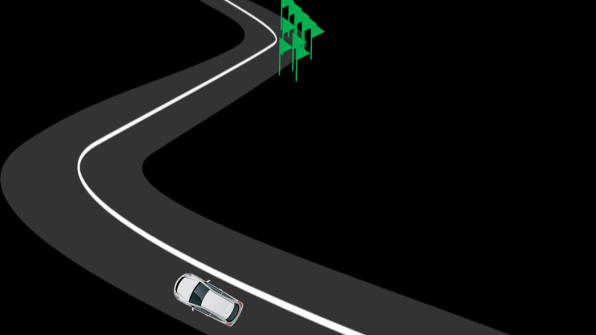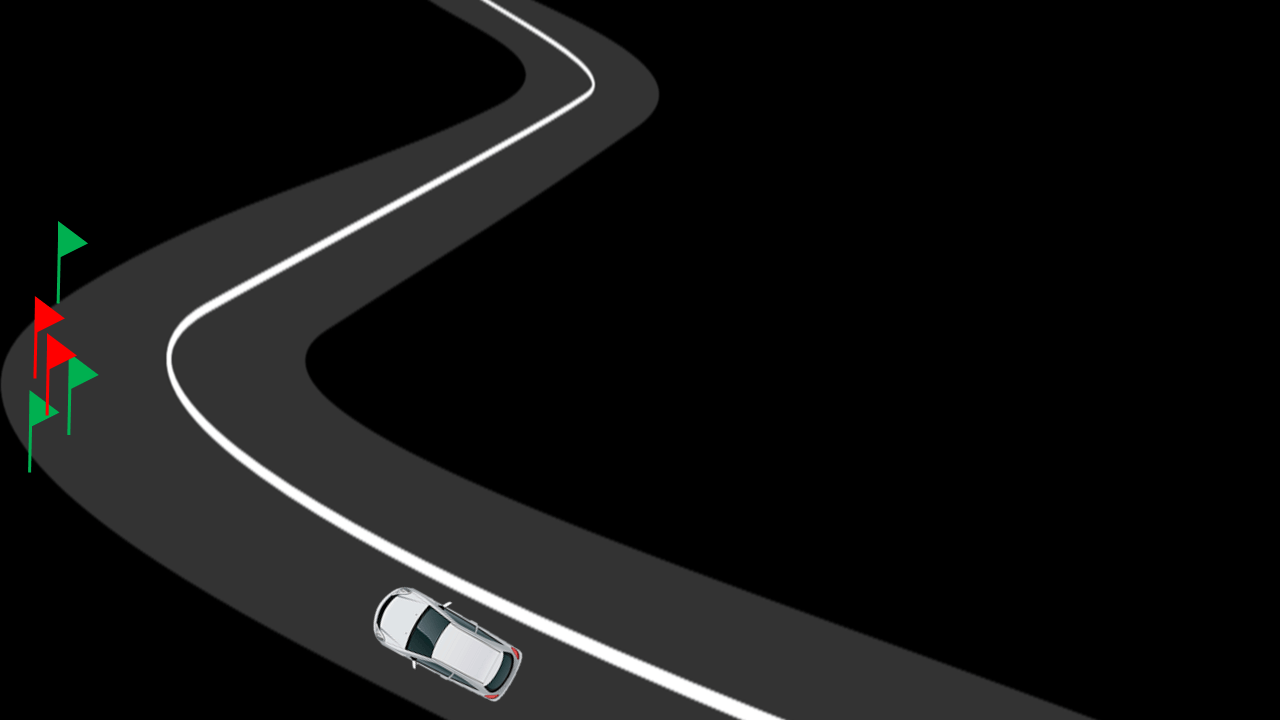
Item 14 of the 17 Competencies marking sheet

Item 14 of the 17 Competencies marking sheet
Feedback is an essential part of learning, but the process must be balanced. A pupil needs to have a clear picture of how they are doing, against their learning objectives, throughout the lesson. They should be encouraged when performing well and coached when a problem or learning opportunity occurs. However, a constant stream of words including questions, however technically accurate, given at an unsuitable time may be de-motivating or actually dangerous. Sitting quietly and saying nothing can also be a very powerful form of feedback in some situations.
All feedback should be relevant, positive and honest. It is not helpful if the pupil is given unrealistic feedback, which creates a false sense of their own ability. Where possible, feedback should not be negative. Rather than saying somebody has a weakness, consider expressing it as a learning opportunity.
However, if they need to be told something is wrong or dangerous there is no point in waffling. The pupil should have a realistic sense of their own performance. Honesty is key. It is not acceptable to ask the pupil how they think they are doing for them to give themselves a glowing account when in actual fact there were risks. The PDI should also interject and provide ‘balance’ of what is working, what isn’t and what we can do to improve.
Feedback is a two-way street. It should, ideally, be prompted by the pupil with the PDI responding to the pupil’s questions or comments.
The pupil’s feedback should never be overlooked or disregarded. Especially how the pupil felt when a situation or risk occurred.
Indications that all the elements of competence are in place could include:
* Providing feedback in response to questions from the pupil.
* Seeking appropriate opportunities to provide feedback that reinforces understanding or confirms achievement of learning objectives.
* Providing feedback about failure to achieve learning objectives that helps the pupil achieve an understanding of what they need to do to improve.
* Providing feedback that the pupil can understand.
* Providing consistent feedback that is reinforced by body language.
Indications of lack of competence include:
* Providing feedback, a long time after an incident so that the pupil cannot link the feedback to what happened.
* Lack of honesty and balance.
* Providing feedback that overlooks a safety critical incident.
* Continuously providing feedback when this may be distracting the pupil.
* Failing to check the pupil’s understanding of feedback.
* Providing feedback that is irrelevant to the pupil’s learning objectives, for example commenting on their personal appearance.
* Refusing to hear reasonable feedback about the PDI’s own performance.
Feedback itself can come in many different forms.
Our eyes, our ears, by touch, by taste and smell.
Every sense in our bodies have a way of feeding back information.
How is it important that we receive feedback.
Let's just think of a few examples of how feedback will benefit us.
You've put a couple of slices of bread in a toaster and switch it on.
Our eyes would let us know when the toast pops up.
Our ears would hear the toaster click when the toast pops up.
Our nose would smell if the toast was burning.
Feedback would not come from touch or taste until we take the toast from the toaster and realise it's too hot to hold straight away,
and the taste feedback would only come as we eat it.
But just the simple task of making and eating some toast will use all of our senses and give us feedback.
When it comes to driving, the main senses that we use are Sight, Touch, & Sound.
But on occasion smell or taste may still come into it.
The smell of petrol leaking, or a clutch burning out.
The fumes coming from another vehicle may even make it feel like they can taste it.
But generally Sight, Sound and Touch are are biggest areas of personal feedback.
While a learner is new to driving, everything is going to feel new and making sense of all these new experiences may make it hard for your pupil to process them.
Allowing your pupil time to accustom themselves to these new experiences is vital for their learning, but even though they experience these new feelings and experiences they may not be able to work out if they are good or bad feelings.
Feedback from you will allow them to file those feelings and experiences into good or bad boxes.
Humans tend to have a natural way of knowing whether something is good or bad, exciting or boring.
Think about someone who goes on a roller coaster.
A lot of the time, but especially on their first go, they may experience feelings that they have not felt before.
This may make them feel scared, exhilarated, worried, nervous, happy, or any other feeling, but each individual will have some sort of feeling,
even that or boredom for some.
Our senses vary from person to person and what might seem absolutely awesome for some, might feel pathetic or boring to others.
The individual will process the information in their own way, but for some, going around a corner on two wheels might feel perfectly fine.
They made it around the corner, no one died, and it felt exciting at the same time.
If they now log that experience in the good file, they will want to have that same experience again and again because to them it felt ok to do that.
Neural Linguistic Programming is what this is commonly referred to.
It is a way that our brains build up a collection of strategies or techniques to help deal with certain situations.
Taking a look at the images below you will see that on this particular road there are lots of red or green flags.
The flags are imaginary flags that this drivers has created to warn them subconsciously what they like or dislike about this winding road.
Maybe in the past an incident happened that scared them, of there may be something to do with this particular bend that causes them concern. There may be a huge drop off on one side of the bend and there are no barriers.
Because they have had a negative feeling about this particular bend it has highlighted a red flag in their brains map.
Obviously the green flags are showing that they like the second bend and nothing has happened to make them feel uncomfortable.
As our learners experiences grow, we want them to have built up subconscious understanding, feelings and knowledge to know what is good in driving and what is bad. This is with the intention of them continuing to drive to all the good that they know.
Feeding back to our pupils to affirm the good will help cement this in their brains.
Likewise feeding back the bad will hopefully get them to avoid this in the future as well.




By supplying feedback to your pupil as to what is good or bad, will help to reinforce good driving habits.
As you can see from the pictures there is a mixed range of flags.
When the flags are green, the driver feels that they coped with the situation well and you agree, then you need to feedback to your pupil to reinforce this behaviour and the techniques involved in achieving it.
When our brain brings up negative flags, it is very easy for those red flags to keep growing, because they way or brain repeatedly reminds us.
It's like having that imaginary devil on one shoulder and an angel on the other.
One shouting out "GO ON DO IT!
and the other saying "DON'T BE STUPID THIS IS A DANGEROUS CORNER, REMEMBER WHAT HAPPENED LAST TIME?"
Our brains are really good at reminding us of things, but sometimes this can be detrimental.
When the negative flags just keep coming, our brain will remind us that every time we go around the same bend. The only way these red flags will begin to disappear, will be by green flags overriding them. This will only happen by doing something different to make the corner feel good to drive and have a successful outcome.
However, that being said, those pesky red flags just keep getting reminded to us by our brain which makes us think about it more and more every time we drive this bend. This probably then puts us on edge every time we go here and we then drive in a manner of over cautiousness which then in turn probably still creates another ref flag. And this is only because we were thinking about the negative previous experiences which still made this corner not feel good even though nothing went wrong or happened to justify a red flag.
This is why as an instructor, you must give feedback, positive or negative.
The driver who thinks taking corners on two wheels is great needs to know this is dangerous and why it is dangerous, whether it makes them feel good or not they need to know the possible outcome of risky driving such as this.
Likewise when your pupil continues to bring up red flags, they will probably keep those red flags going time and time again until you resolve the cause of those red flags.
What can you do to assist your pupil?
Possibly a demonstration of what something "should" feel like. or what is deemed good driving and even what is deemed unsafe or dodgy driving.
Your feedback is crucial to your pupils as is their feedback to you.
the question of "How did that make you feel" is probably one of the biggest tools you can use to get feedback from your pupil.
BOOKS, VIDEOS, ANIMATIONS, MODELS, DEMONSTRATIONS or whatever methods you choose to use to give feedback is ok as long as you use it.
The Timing of your feedback is as crucial as the feedback itself.
There is no point giving feedback after your pupil has nearly lost control of the car on a country road on a sharp bend because they didn't slow down.
You want to be giving feedback or getting feedback from your pupil in the way of a prompt before the bend.
"How slow do we need to be before taking this corner?"
"How tight do you think the corner ahead is?"
"Is this a suitable speed for the next corner?"
"How much braking is necessary for this bend?"
Saying "Well that was way too fast wasn't it, you nearly lost control" is not the feedback you want to be giving in this situation.
However, some feedback will need to be given after the situation.
Prompting to avert a dangerous situation arising is necessary, but if the circumstances allow things to remain safe, but errors made, it is possible for you to let the error happen so that you can give feedback on it afterwards.
As with many things to do with driver training, you will build a skill set that will allow you to adapt to numerous situations where effective learning can take place as long as it is safe.
Your pupils need to know before they go it alone, what feels good and what doesn't so they can avoid the bad stuff from ever happening in the future.
We cannot avoid bad situations happening for life, but we can supply the necessary skills for our drivers to be prepared with how to deal with as many situations as we possibly can prior to them gaining a full licence.
The timing and the quantity of the feedback must reflect on the ability and experience of your pupil.
A constant stream or words to your pupil at an inappropriate time will not be heard, absorbed or of any use to your pupil whatsoever.
They will hear "Bits" but not take in everything because their concentration will be somewhere else.
If you sit in on A pupils driving test, and at the end of the test ask them what the examiner said to the about what will happen during the test itself.
NOT ONE OF YOUR PUPILS will be able to tell you what the examiner said.
No you could argue that it was 40 minutes ago and it would be hard for them to remember what the examiner said.
And although that may carry some weight, the reality is that the pupils focus was not on the examiner at all, it was on the test and ensuring their focus was on doing everything right for 40 minutes.
Everything the examiner said explaining what was going to happen over the next 40 minutes literally went in one ear and out the other.
As mentioned in previous categories.
Silence can be a golden form of feedback.
Don't just think that you must be talking to earn your wages and to ensure your pupil thinks your a great instructor.
If your pupil is doing a great job, tell them.
"Well done this is really nice driving"
But then shut up until it is necessary for you to give an instruction or prompt in necessary or to give feedback that may be necessary.
YOU DON'T HAVE TO TALK TO EARN YOUR MONEY
If you are saying nothing then your pupil will get to know that what they are doing must be good, because if it wasn't you would have said something, wouldn't you?
I am a true advocate of not "buttering things up"
Giving feedback just to make your pupil feel good is definitely NOT GOOD PRACTICE!
Saying things like "well done that was a really good lesson today"
When in reality you're thinking OMG we nearly died twice.
Will give totally the wrong message to your pupil.
If your pupil needs to be told something is dangerous then tell them.
But how you say it can really demoralising to them.
Negative feedback can still be given but by asking certain questions can create a conversation that will allow the pupil to work out for themselves that what has just happened is negative without you saying something as simple as "That was terrible wasn't it?"
Let's create a couple of situations where the same feedback is given but in a different manner.
(I'm going to use Paul again as my pupil)
You've asked you pupil to take the next road on the left.
Everything has gone well apart from a left signal was not placed on.
Nothing came from it as there was no one around but you want to give feedback.
You could say
EXAMPLE 1
INSTRUCTOR
"OK Paul, how did you feel that went?"
PAUL
"OK, actually I thought that went really well!"
INSTRUCTOR
"Yeah most of it was good, but you didn't put a signal on!" (you pulled out the negative, they missed the signal)
PAUL
"Oh yes I forgot that didn't I"
Alternate way of giving the feedback.
EXAMPLE 2
INSTRUCTOR
"OK Paul, how do you feel that went?"
PAUL
"OK, actually I thought that went really well!"
INSTRUCTOR
"Actually the majority of that was really good, was there anything you'd change about it"
PAUL
"Ermm, I don't think so"
INSTRUCTOR
"OK, so just talk me through the process of what you did on the approach"
PAUL
"Well i checked my mirrors.........oh I forgot my signal didn't I?"
INSTRUCTOR
"You did yes. Why is it necessary that we check our mirrors and put a signal on?"
PAUL
"Well I need to check my mirrors first so I know if there is anything behind us or to the side of us that I might affect by turning into the road. And the signal is to notify everyone else what I'm just about to do."
INSTRUCTOR
"Perfect, that is exactly why you use them.
How could you ensure that you place on a signal next time?"
PAUL
"Could you prompt me next time we go round if I forget it?"
INSTRUCTOR
"Of course I can, would you like to do that again?"
In this instance, you have allowed the pupil to reflect on what they did, they clarified why there was the need for mirrors and signals.
But more importantly they found the error for themselves.
EXAMPLE 3
INSTRUCTOR
"OK Paul, how do you feel that went?"
PAUL
"OK, actually I thought that went really well!"
INSTRUCTOR
"Was there anything you'd change about it"
PAUL
"Ermm, I don't think so"
INSTRUCTOR
"Can you remember last week when we introduced the Hazard routine?"
PAUL
"Yes I think so, was it MSPSGL?"
INSTRUCTOR
"Yes, that is it. Can you remember what each letter stand for?"
PAUL
"I think its, Mirrors.......Signal..... Position.......Speed......Gear.......Look"
INSTRUCTOR
"Yes it is, well done, So thinking about that last junction, did you manage to implement that routine fully?"
PAUL
"OH, I missed the signal didn't I?"
INSTRUCTOR
"The signal was missed yes, however everything else was really very nice!
would you like any input from me to help you next time we do a left turn?"
PAUL
"That would be really handy while i get used to getting the routine remembered. Can you prompt me if it looks like I am going to forget it?"
INSTRUCTOR
"Of course I can Paul, Just that last little bit and you'll have this mastered"
Again in this instance, you have allowed the pupil to reflect on what they did, and they found the error for themselves.
You have actively given feedback, allowed the pupil to check on their current knowledge and understanding and confirm to them whether it was right.
In addition you have praised in your feedback everything that went well without actually creating any negative.
You allowed the pupil to find the weaker area to work on, this keeps them motivated and wanting to improve without feeling like they are hopeless.
Don't get into the habit of only ever pulling your pupil over to the side of the road when things go wrong.
Imagine yourself in the drivers seat as a pupil. Every lesson you have with your instructor and things don't got well they pull you in.
Every lesson you are now on edge if they ever ask you to pull in on the left.
"What have I done wrong now?"
Get used to pulling in for the good the not so good, as well as the really bad stuff.
If the pupil does not know why you are pulling them in they won't feel on edge. It could be to say everything is going great and they are doing a brilliant job.
Sometimes, you will get a lesson where just everything seems to go bad.
This may be "just one of those days" or it may be something else.
Your pupils state of mind or their health.
Discuss this with them, but also explain to them that some of the best learning lesson can come from the ones that feel really bad.
Now that might sound odd to say that, but picture this.
Your pupil comes to every lesson, everything you introduce as new tasks, your pupil aces it first time.
You've never had a stall, gear changing seems a breeze, the MSPSGL routine was taken to like a duck to water,
Increasing and decreasing speed on different road in different situations all goes really well.
Actually, everything goes well throughout their lessons and they have never made any mistakes.
They book their driving test and pass it first time.
The following week they phone you up in tears, expressing that they have purchased a car and can't stop stalling.
and can't understand why the car keeps rolling back on hills when they move off.
By having things go wrong on lessons can be just as important as things going right.
If things go wrong, it give you the opportunity to allow your pupil to build on their experience and work out why things didn't go so well, what caused it and how to resolve it.
When you are in safe locations.
Let them stall
Let them roll on a hill and learn to hold it with the clutch, parking brake, footbrake.
Let them pull away in the wrong gear to know how the car feels.
Let them experience coming off the clutch fully in reverse gear to realise how quickly things can go wrong in reverse if they let the car build up speed.
Teach them everything that is bad as well as good so they have the knowledge to deal with it.
TEACH THEM HOW EVERYTHING WORKS, WHY IT'S USED, THE PITFALLS OF THEM AND THE BENEFITS.
WHAT TO DO IF THEY FAIL.
By knowing new things and experiencing them, it will also keep them motivated.
Remember
KNOWLEDGE IS POWER
The more knowledge they have the better prepared they will be for the rest of their lives.
One really experienced trainer taught me the Feedback should not be known as feedback but as Feedforward.
By feeding forward you are working on how to improve rather than looking back at things that didn't go so well.
I'ts about resolving the issues rather than harping on about the errors.